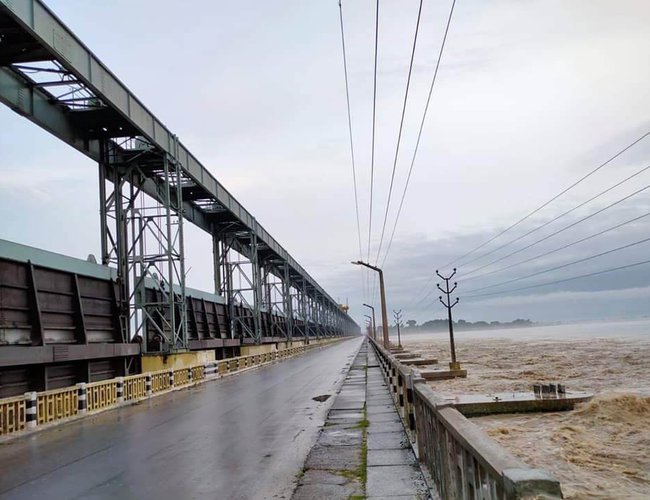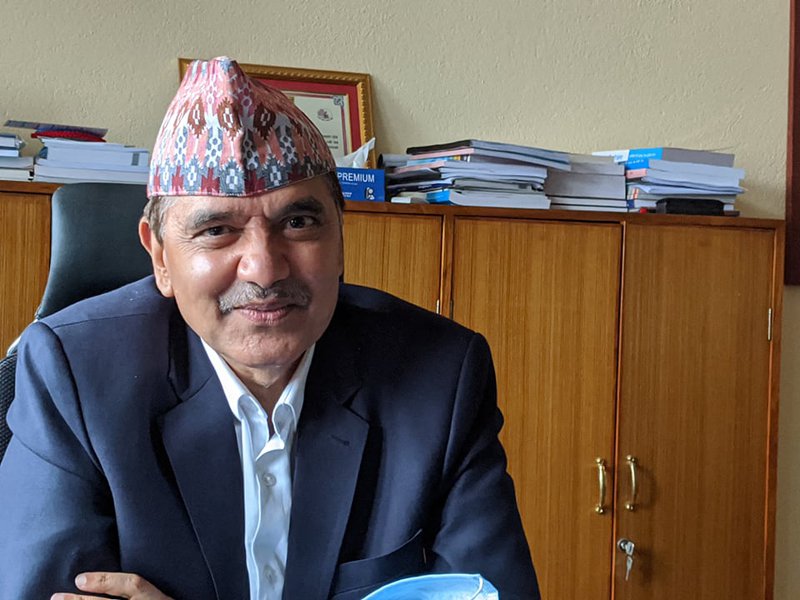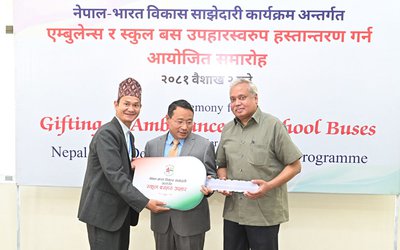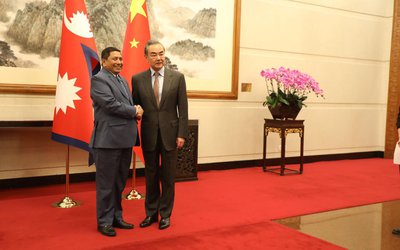
Technologically, nothing is impossible. One can construct a nuclear power plant at the top of Mt. Everest or make a home in Mars and wind turbine across east west Mahabharat to import cool air to Bihar and UP of India.
The question is: do we really need them? Are they financially viable options? Although some ideas are technically and physically impossible to implement, one can think about them and sell them. If political leaders, who always need some kinds of dream to show to the people, endorse such a futile idea, it will be a disaster for a country like Nepal.
As Nepal’s topographical elevation from east to west is so diverse, with ups and downs, it is technically and financially impossible to transfer the inter-basin water constructing any canal from east to west. Even if such an idea is possible, there is always a question whether we really need that kind of mega infrastructure?
According to experts, Elevation of Karnali is 193 meters, whereas elevation of Mahakali River is over 300. Similarly, Elevation of Narayani River is 190 meters and Hetauda is 450 meters. Besides, the water availability in the river during the lean season is so low it is impossible to navigate.
In such a diverse topography, the construction tunnel as the size proposed by a group of Non-Residential Nepali through their Grand Multi-purpose East West Canal is impossible.
Proposed by four NRNs Ambika P. Adhikari, Shiva Gautam,Om Raut, Keshav Bhattarai and Keshab Sharma, East West Grand Canal Of Nepal can be a mere dream project.
Given the studies made in Nepal by Nepali and foreign experts, construction of great east-west canal is technically and financially impossible. However, a group of scholars leaving abroad conceived this futile concept and circulated it to broader public debate.
As the issue has been put to public debate, Nepalese water resources experts recently joined a discussion program where Nepalese experts proved that the concept is a futile exercise.
Madhav Belbase, secretary at the Ministry of Drinking Water, termed the proposed concept of construction of the National East-West Multi-purpose canal technically, financially, environmentally and geologically unviable.
He said that such a construction is impossible given Nepal’s north-south slopes from the east to west. Secretary Belbase argued that there are several river basins included across the region.
Commenting on speaker Professor Keshab Bhattarai’s presentation, Belbase, well-known water irrigation engineer having played a key role to implement the Bheri-Babai River Diversion project and several other irrigation projects, said that linking different river basin Kosi, Gandaki, Karnali and Mahakali is environmentally devastating.
He said that Kosi sediments are estimated to be one hundred million cubic meters per year which is enough to build dyke three times round the earth along the equator. Belbase added that River sediments are big challenges in constructing a canal of this size arguing that sediments in Nepal cannot be controlled merely by increasing vegetation, high-intensity rainfall and fragile hill slopes are the reason for the and sediments.
Belbase said that 50% of the dead storage was filled by the 1993 single-day event in Kulekhani, the watershed is best protected. He also said that flood damages are more by small and medium rivers than the big rivers he said that the size of flood control freed board is a peanut. In 2014 the damage by Kamala and Babai was similar to the same data.
The concept is impossible to implement because of variations of elevation. In a Facebook debate, many Nepalese water resources experts presented their views.

“I am very glad that the commenters, particularly Secretary Madhav Belbase, have rightly rebutted this in very simple terms. Kosi, Gandak, Karnali and Mahakali are surplus (wet) basins while other medium and smaller rain-fed basins are deficit (dry) basins. So what is wrong with the currently planned inter-basin diversions from the major wet basins to adjacent dry basins to irrigate our land in the Terai? Why transfer from wet to wet basins? Not to talk of the other major challenges pointed by many others. My humble suggestion- implement quickly and efficiently our current plans instead of comparing with projects from entirely different hydrological/climatic and physiographic regimes,” Divas B Basnyat, water resources experts commented on Madhav Belbase’s Facebook wall.
Organized by Nepal Institute for Urban and Regional Studies (NIURS) a discussion was held under Promethean Podium. Moderated by Sagar Prasai regional planner and board member of NIURS, Dr. Jagadish Chandra Pokharel, former vice-chairman of the National Planning Commission and chairman of NIURS started the program with opening remarks.
Pokharel said that the discussion is organized to generate the debate whether the national East-West Multi-Purpose Canal can help Nepal.
The main speaker of the concept Bhattarai said that their proposed East-West Multi-Purpose Canal is still a concept developed to support how Nepal’s water resources are exploited to bring tangible change in the country.
“The proposed Grand Canal can irrigate some 8,000 square kilometers of land that is not currently irrigated in the Nepali plains, generate a significant amount of solar power, produce some hydropower as a byproduct, usher an era of commercial water navigation, recharge the ever depleting groundwater, help control flood, and promote opportunities for tourism and recreation generating thousands of direct and indirect jobs. Our proposal, which is an expansion of the initial concepts, provides a high-level overview of some technical, environmental and social issues related to the different aspects of the proposed canal project,” said presenter Bhattarai.
He said that the proposed Grand Canal can irrigate some 8,000 square kilometers of land that is not currently irrigated in the Nepali plains, generate a significant amount of solar power, produce some hydropower as a byproduct, usher an era of commercial water navigation, recharge the ever depleting groundwater, help control flood, and promote opportunities for tourism and recreation generating thousands of direct and indirect jobs.
Other Nepalis also disagree with Bhattarai’s presentation. “Has anybody been concerned how many modes of transport do we need in our fertile belt of 25 km? Railway is already in pipeline! 2 highways are already serving the belt! One of them is already planned to upgrade to expressway category. Just next to the terai in inner terai has one more competing road. All of these are competing to each other. Thousands of NS flowing streams are going to be obstructed by huge embankments spanning east-west and the northern part of the canal will be flooded every year by this canal. How come this could even be the debatable?” writes Gopal Sigdél, joint secretary at Ministry of Physical Planning in Facebook wall of Belbase.
Having worked for over 28 years of working experience at various levels in the Government of Nepal, secretary Belbase in his detailed presentation technically proved that the concept is against Nepal’s topography and river basins, slopes and flows, of water.
Ajaya Dixit, a renowned water resources expert having conducted a number of studies and published books and articles, said that one has to look at technical limitations and cost.
“About 100 years after Major Arthur Cotton's first proposed river linking in India 1850s, a plan of National Water Grid was made in the 1960s. This Water Grid proposal was abandoned because of its technical limitations and exceptionally high costs,” said Ajaya Dixit.
“Pilot Dinshaw J. Dastur proposed a Garland Canal from Meghalaya in the east to river Ravi in the west via Nepal along the south of the Siwalik. The Garland Canal proposal was without any trace of scientific thinking and engineering fundamentals. This present proposal, a remerged version of Garland Canal, is totally out of step with the country’s hydro-ecology, economic, social and environmental challenges, priorities, disaster risks and regional black swans.”
During the debate, former minister Umakanta Jha, who also served a long period of time in the Ministry of Water Resources, spoke dubiously. Jha’s argument was full of ambiguity.
At a time when India is unable to continue the river linking project in its territory because of insurmountable economic, social and environmental challenges, many questions the timing of starting debate on river linking debates in Nepal.
Government officials, who have been taking part in Nepal-India water resources negotiations, said that India has long been pressing Nepal to accept the Kosi river diversion scheme. After vehement opposition from Nepal, India has formally dropped it.
In this context, why few NRNs, with a poor understanding of the history of water resources of Nepal and India, forwarded hare brain agenda raises many questions. After the discussions, Nepal’s experts proved that the agenda is a futile exercise. Even initiators of the agenda are unable to defend it technically, economically and environmentally.
“The project seems infeasible technically, economically, socially, and environmentally. No further discussion is required on this,” concludes secretary Belbase.
Nothing is impossible in technology. However, the question is whether such a concept of Grand Canal is economically viable and whether Nepal needs such a mega canal. Impossible to implement, it is likely to make Nepal’s water resources sector further messy.

Keshab Poudel
Poudel is the editor of New Spotlight Magazine.
- ECONOMY: Growth At 3.3
- Apr 16, 2024
- DPM’s SHRESTHA’S CHINA VISIT High Profile, Low Key
- Apr 14, 2024
- Maha Kumbha In Barahkshetra: A Sacred Festival In Sacred Koshi (Kaushiki) River
- Apr 09, 2024
- LOSS AND DAMAGE: Upper Tamakoshi A Case
- Apr 02, 2024
- Helvetas-Nepal’s InElam Promoting Herbal Oil In Sarlahi
- Mar 31, 2024
















